According to the Puranas, during the great churning of the ocean called Samudra Manthan, a pot of poison emerged from the ocean.
The gods and the demons were terrified as it could destroy the entire world. When they ran to Shiva for help, he in order to protect the world, drank the deadly poison but held it in his throat instead of swallowing it. This turned his throat blue, and since then he came to be known as ‘Nilkantha’, the blue-throated one. Shivratri celebrates this event by which Shiva saved the world.
[wp_ad_camp_1]
A Festival Significant for Women:
Shivratri is considered especially auspicious for women. Married women pray for the well being of their husbands and sons, while unmarried women pray for an ideal husband like Shiva, who is the spouse of Kali, Parvati and Durga. But generally it is believed that anyone who utters the name of Shiva during Shivratri with pure devotion is freed from all sins. He or she reaches the abode of Shiva and is liberated from the cycle of birth and death.
On the day of Shivratri, a three-tiered platform is built around a fire. The topmost plank represents ‘swargaloka’ (heaven), the middle one ‘antarikshaloka’ (space) and the bottom one ‘bhuloka’ (earth). Eleven ‘kalash’ or urns, are kept on the ‘swargaloka’ plank symbolizing the 11 manifestations of the ‘Rudra’ or destructive Shiva. These are decorated with the leaves of ‘bilva’ or ‘bael’ (Aegle marmelos) and mango atop a coconut representing the head of Shiva. The uncut shank of the coconut symbolizes his tangled hair and the three spots on the fruit Shiva’s three eyes.
Here are three reasons to celebrate Shivratri:
1. The absolute formless God, Sadashiv appeared in the form of “Lingodbhav Moorti” exactly at midnight on Maha Shivratri. That is why all Shiva devotees keep vigil during the night of Shivratri and do “Shivlingam abhishekham” at midnight.
2. Lord Shiva was married to Devi Parvati on Shivratri. Remember Shiva minus Parvati is pure ‘Nirgun Brahman’. With his illusive power, (Maya, Parvati) He becomes the “Sagun Brahman” for the purpose of the pious devotion of his devotees.
3. It is also believed that on Shivratri, Lord Shiva became ‘Neelkantham’ or the blue-throated by swallowing the deadly poison that came up during the churning of “Kshir Sagar” or the milky ocean.
The poison was so deadly that even a drop in His stomach, which represents the universe, would have annihilated the entire world. Hence, He held it in His neck, which turned blue due to the effect of poison. Shivratri is therefore also a day of thanksgiving to the Lord for protecting us from annihilation.
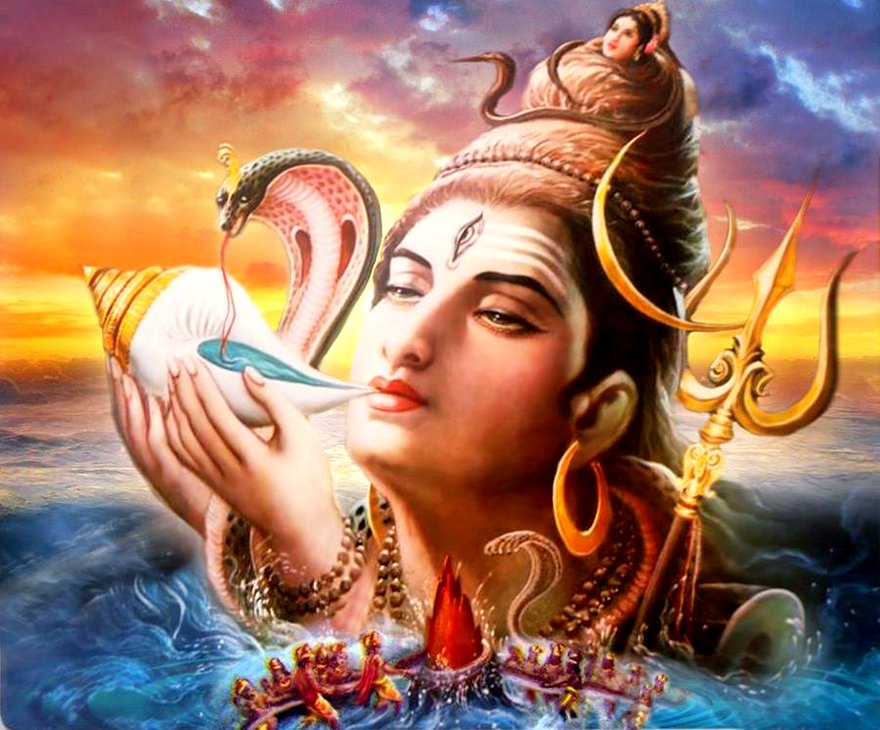
The 14th shloka of Shivmahimna Stotra says: “O three eyed Lord, when the poison came up through the churning of the ocean by the gods and demons, they were all aghast with fear as if the untimely end of all creation was imminent. In your kindness, you drank all the poison that still makes your throat blue. O Lord, even this blue mark does but increase your glory. What is apparently a blemish becomes an ornament in one intent on ridding the world of fear.”
Very early morning, Shiva temples are flocked by devotees, young and old, who come to perform the traditional Shivalinga worship (puja) and hence hope for favours from the god. Devotees bathe at sunrise, preferably in the Ganga, or any other holy water source (like the Shiva Sagartank at Khajurao). This is a rite of purification, which is an important part of all Hindu festivals. Wearing clean clothing after the holy bath, worshippers carry pots of water to the temple to bathe the Shivalinga.
Women and men both offer prayers to the sun, Vishnu and Shiva. The temple reverberates with the sound of bells and shouts of “Shankerji ki Jai” meaning ‘Hail Shiva’. Devotees circumambulate the ling three or seven times, and then pour water over it. Some also pour milk over it.
According to the Shiva Purana, the Maha Shivaratri worship must incorporate six items:
1. Bathing the Shiv Linga with water, milk and honey. Wood, apple or bel leaves are added to, representing purification of the soul;
2. Vermilion paste is applied to the Shiv Linga after bathing it. This represents virtue;
3. Offering of fruits, which is conducive to longevity and gratification of desires;
4. Burning incense, yielding wealth;
5. The lighting of the lamp which is conducive to the attainment of knowledge;
6. And betel leaves marking satisfaction with worldly pleasures.
Tripundra refers to the three horizontal stripes of holy ash applied to the forehead by worshipers of Lord Shiva. These stripes symbolise spiritual knowledge, purity and penance (spiritual practice of Yoga). They also represent the three eyes of Lord Shiva.
Wearing a mala (rosary) made from the rudraksha seeds of the rudraksha tree (said to have sprung from the tears of Lord Shiva) when worshiping Lord Shiva is ideal. A rudraksha seed is mahogany-like color, or could sometimes be black. They might also have traces of sacred sandalwood powder, turmeric, kumkum, or holy ash if the rosary is used in worship ceremonies or annointations.

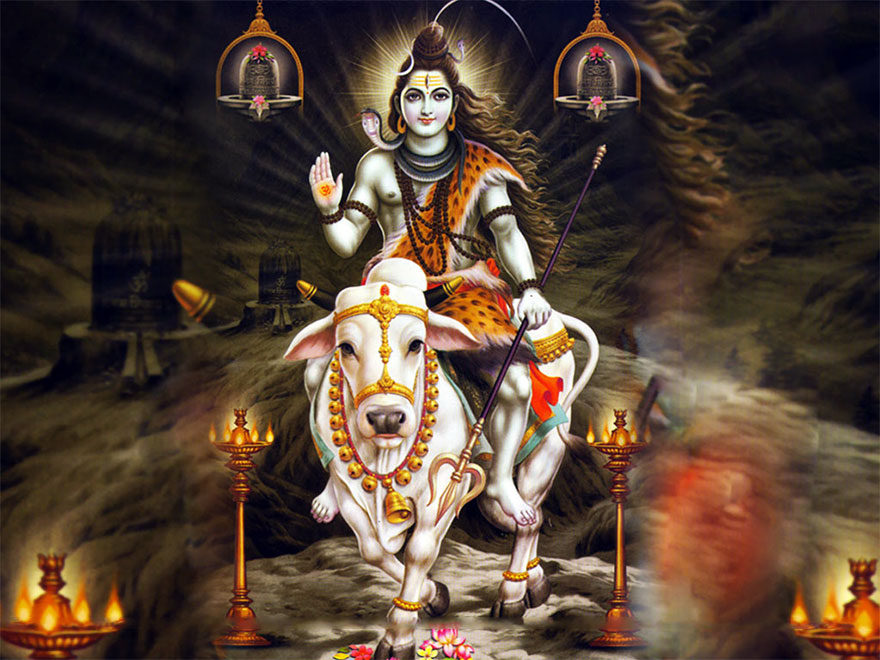
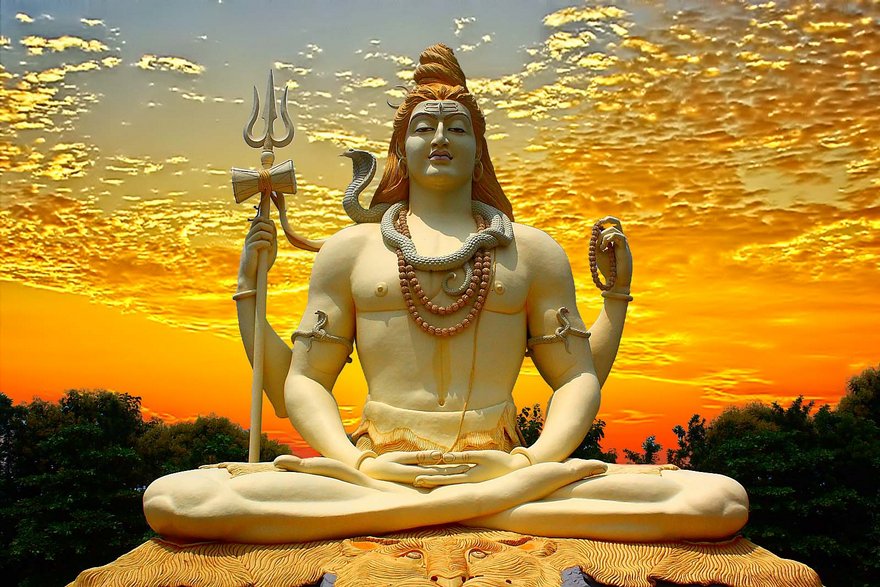
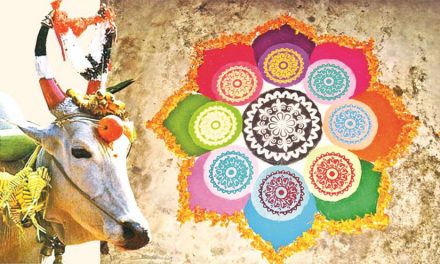

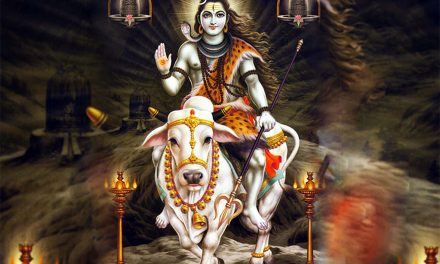









I want to know the birth of LORD SHIVA, mother and father of shiva.
Thanks for this detailed information about Maha Shivratri. Please restart your regular posts on health and wellbeing.
On Whom LORD SHIVA meditates? HE BEING THE ALMIGHTY WHY HE SHOULD DO THAT. I WANT A SINCERE ANSWER FROM YOU? I have asked it to so many GURUS but never had any satisfied replies.
# K. Raaghavan:
Good question. Let’s make it better, slightly.
What is Lord Shiva meditating ON?
In your question, you have asked “on WHOM” is Lord Shiva meditating. Right? Simple, he mediates on whomever, whatever, whenever, wherever he wants to meditate on.
Why should he be meditating on somebody? And have you meditated? Does meditation has to be on somebody always? No. It is not necessary. There are several types and forms of meditation. Don’t apply your rules and regulations on Him and expect him to follow that. He, Lord Shiva is transcendence itself. He has no necessity to meditate on anybody.
About your being satisfied…. like I or anybody in this world ever cares to know if “you” are satisfied. Do you think that if you are not satisfied then Lord Shiva should not meditate? Lol man.
If only you can listen to yourself!!!
God, read your question again: “On Whom Lord Shiva Meditates?”. Why do you assume he is meditating at all? What makes you think so? Do you have an answer for that in the first place?
Good question bro, keep it rolling.
Raaghavan has asked a good question.
small correction not only shiva is meditating all the three moorthis (vishnu, shiva and brahma )also keep meditating.
The Almighty God i.e (parabrahmam )is formless. The heirarchy is Brahma, vishnu, Rudra, maheswara, sadashiva, nadatatva, Bhindhutatva, sakthi and then parabrahma(shiva). Many times people missunderstand rudra with parabrahma(shiva). Even though all the jeevatmas had originated from paramatma, all the jeevatmas without the support paramatma cannot survive. This is clearly explained in lingha tatva of saiva siddanta. Brahma , vishnu and rudra perform their duties of creation , sustaining and demolition according to the instruction from parabrahmam. Any jeevatma (human being/rishis/asuras/devas) meditating on paramatma gains the power and blessed with boon later if found crossing the limits then punished by the Demi gods. To be precise the Real God is four steps superior to Brahma, vishnu and Rudra.
The brahma , vishnu and Rudra are in bhooda jada(human farm) next step is the formless Nada (sound) next step is the formless Bhindhu(light) converging point of Srichakra. Through bhindhu only all the power is descending to the demi Gods. Then comes the Sakthi Dynamic power after that the supreme shiva the ultimate static force (SAT CHIT ANANDA swaroopa). for further clarification please contact me.
Durairaaj sreevarshan
Dear Shri Raaghavan,
Your question is very difficult to answer. Even if someone, who is a sakshatkari person, knows the answer it will be difficult to put to in words.
I can only attempt to answer as follows,
When we say Shiva meditates, it does not have to be meditating on someone higher than him. He is in a meditative state meaning that His swaroop is Sat Chit Anand. That is the nature of Shiva Tattva.
Shiva is faith, Shiva is that essence of life when
we were born, Shiva is deep within us, when we need
to know who we are, why we are here, how to live a good life? Shivoham shivoham, is building our own life to be worthy of praying and deserving the blessings of our universe. Maha shivratri is a very important tyohaar in our small island of Mauritius. Some day do visit this place just before Maha Shivratri, and do experience this superb manifestation of our Shiva n shakti.
May all be blessed by our mahadev, Aum Namashivaya.
K.Raaghavan – The others who have answered after you have done well, but I would like to direct your attention perhaps a bit elsewhere at the same time. Why would Shiva meditate? The answer to that has been before you for the whole of your life, and a great many of the past. Shiva meditates upon YOU! As well as all others. One could say that he meditates on Life in the Universal sense, and this is to say the exact same thing. Why depend solely upon ANY Guru? To do so is to be lazy. Each of us is responsible for our own spiritual welfare and attainment. I DO realize that there are a great many who claim to be Gurus, and who are not able to do the work of an actual Guru. I suggest that you begin by not bothering to worry too much about any Guru, instead set your own course and go within and experience. In this way one can not only learn to discern the true from the false, but they can also gain ever greater amounts of experience within. From that point of view how could anyone possibly fail to recognize a true Guru? Waste no time or effort searching for a Guru. Let that one find you because at the point where that meeting is to occur, neither can possibly prevent it from happening. I must also say that I disagree a bit with what one has posted above. the Light is always secondary to the Naad. The Formless Shabd exists at the highest stage. May you achieve the answers to your questions for yourself, within.
Lord Shiva is mediating on the ONE who has no second and it is Krishna himself.
To all the one who has replied to KARGUI’s Question, I would add few more points. We, the presently living generation, have a very bad habit of comparing everything with the current times. for e.g.; if there is a narration that, in olden days villagers used to travel by walk to long distances like 500-1000 KMs,, we might have difficulty and feel unbelievable to accept that. So here, we are comparing on how We meditate, with the Supreme One does. Meditation is nothing but, being in a tranquil state and preserving your energy by restraining your mind from wandering through the sea of thoughts. And for us, being just Humans, we need something to focus on, to arrest our mind from wandering and pushing ourself into tranquility. So we need something to focus and concentrate on, and hence easiest is to think of your favourite God,In Simple words, Meditation means, Dhyana. Dhyana can be simply doing pranayam (chanting AUM), or just closing eyes and thinking of your favourite deity, or it can be just closing your eyes and sitting idle. All these can be called meditation. And as it is told here by almost all, that the Supreme powers (Shiva, Vishnu or Brahma) meditates about everyone, is wrong, because it is equal to saying that An Apple Tree grows and bears fruit just for the purpose of feeding us. No. The Tree has flowered and bear fruit by itself and since we found that the fruit is eatable, we started eating it. Every single living thing on earth has its own purpose of birth. Same way, even if we were not born, still the Supreme Powers exist. What we are and become, is based on our Own Karma. God has only little power to deviate from our bad Karma, Thats why even the Gods have suffered on many things based on their Karma or the Dharma. Its best not to blindly believe on something, than we realise what we are and our capabilities, and helping each other and every living things on earth as sacred.
I hope, I was able clarify a bit, about this vast subject.
The story of Churning of the Ocean does not appeal to the mind. Why should poison come out of the ocean? Who created the poison? If the poison was so dangerous why was it created? Why was it not destroyed by an antidote? When the churning was going on Lord Vishnu assumed the form of a tortoise and went beneath the mountain which was used as the churning stick to to prevent it from getting immersed in the ocean mud. So who is the real God here Vishnu lying under the mountain or Shiva who is drinking the poison as both of them are at the same location and at the same time? How many Gods are there in fact?
Lord Siva is the Suppreme Lord of everything. He is the ONLY ONE . There are countless refernce of this fact in Shruti ( Vedas), the Upanishadas and the Mahabharata. There is no Master of his. Neither in Past, nor at Present and nor in the Future there will be anyone as His Master. He is the Master of all. He is the Supreme ParaBrahma. Therefore, He doesn’t need to meditate upon anyone. Since He is the Lord of Yoga, He teaches the world of the same by showing meditation.
om namah shivay..
to those who want to know Shiva is meditating on sadashiva mahavishnu parambrahm as he is in sagun form when he is in nirguna form he is Who He Is the ultimate reality the Tridevas are diffrent aspects of the same reality . Om Namah Shivay
someone please educate me about importence of shivlinga….someone told me every shivling has conciousness of shiva and maa parvati…is it true???
No harm if the email address is published.
Now there are two questions: i) how many gods? and ii) about meditation of Shiva. The vedanta, Upanishats say there is one reality, Brahma which appears as many, including this universe. Bhagawad Geeta says that the whole universe is created by a part of (or 1/4) of Brahma (chapter-10). Hence there should be the remaining part, (or 3/4). A natural conclusion is that that part is called Easwara, the controller of everything.
For the sake of convenience the Rishis divided the concept of Easwara into three, Brahmaa deva, Vishnu and Shiva (The names are given by men). They are considered to represent the energy by which he universe is sustained i.e., omniscience, omnipresence omnipotence respectively. We can see that these three have no parents even in the stories. Legends are galore, but there would be a principle underlying each story. Hence each story is relevant only to the extent of explaining one particular principle in the circumstance narrated. Therefore the stories cannot be relied on too much and too far.
There is a psychological truth that if we meditate on anybody or anything with the belief that it has certain qualities, we acquire those qualities little by little. The qualities are important, not the names we have ascribed to the Gods or others. Apart from the three important Gods, we have Gods in heaven, who are actually the powers of nature. Thus we have Air, Water and Fire which are all gods. ‘Deva’ in Sanskrit means that which shines, illuminates, blesses, etc. Therefore any power of nature which brightens, enlightens or blesses anything of the universe is a God. Hence we have many, many Gods but only one Easwara, the controller of the universe. The first mentioned three Gods, Brahmaa, Vishnu and Shiva together make the Easwara. Easwara is sometimes chanted by the word OHM, which is said to comprise the sound of syllables A, OH, and M symbolic representations of the three.
All these Gods meditate always or whenever possible. We can take a clue, that is the best method of recharging our potentialities. Devotees may argue endlessly about who the chief among the three is. And there are stories supporting each. As mentioned earlier, each story is to bring out a particular principle and not for universal application.
Some say that Shiva is the God for destruction, but many stories do not support that fact. Even in the story of churning of the milky ocean, Shiva was interested not at all in destroying the universe, but in preserving it, and hence he drank the poison and so helped the universe to sustain.
Hence if he meditates, it is most likely that it is for acquiring and increasing the energy to sustain the universe against all odds. And meditations are of various kinds, e.g., saguna dhyaana, nirguna dhyaana, savikalpa, nirvikalpa, etc. While saguna dhyana is directed towards a person or object, the nirguna dhyana is without any name or form.
As per Anurag Sagar of Kabir, Kaal Niranjan is the fourth of the Supreme Lord’s 16 sons. He is the true Narayan of whom we the Naras are a 1:1 inferior copy. Both have 6+1 chakras.
Nirgun Shiva is the {16 petalled} aspect of this Narayan. Shakti being {12 petalled}. Vishnu-Brahma-Shankar are the 3 gunas, their sons. They are {10 petalled}.
Shankar’s sons: Kartikeya {6 petalled} & Ganesha {4 petalled}. Yama is {5 or false 1000-petalled} Sahasrara. True Sahasrara is {14 petalled}.
Krishna, being {16 petalled} is a perfect avatara of nirgun Shiva. Rama is {14 petalled}, true Sahasrara. They are not avataras of Vishnu.
Kaal’s task is to keep us in the bondage of Karma tied to the Wheel of 8.4 mill. life-forms, called Chaurasi. Being regretful and having been declared persona non grata from the Supreme Lord’s Court, he can only meditate upon the Supreme Lord.